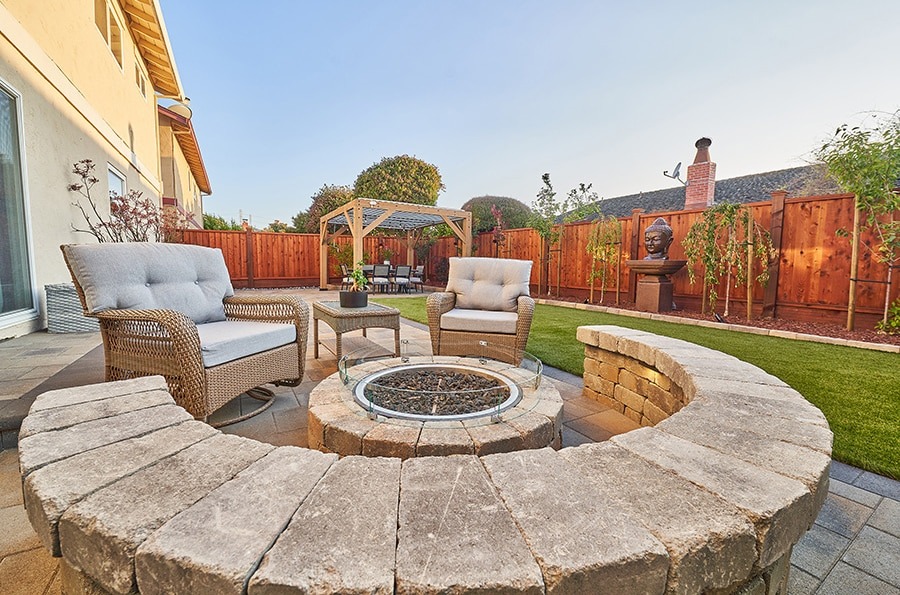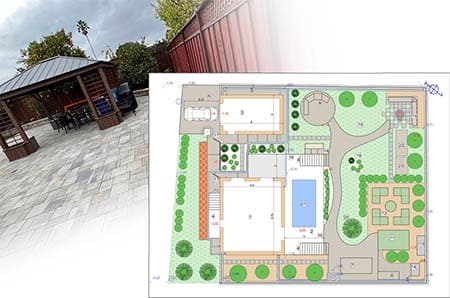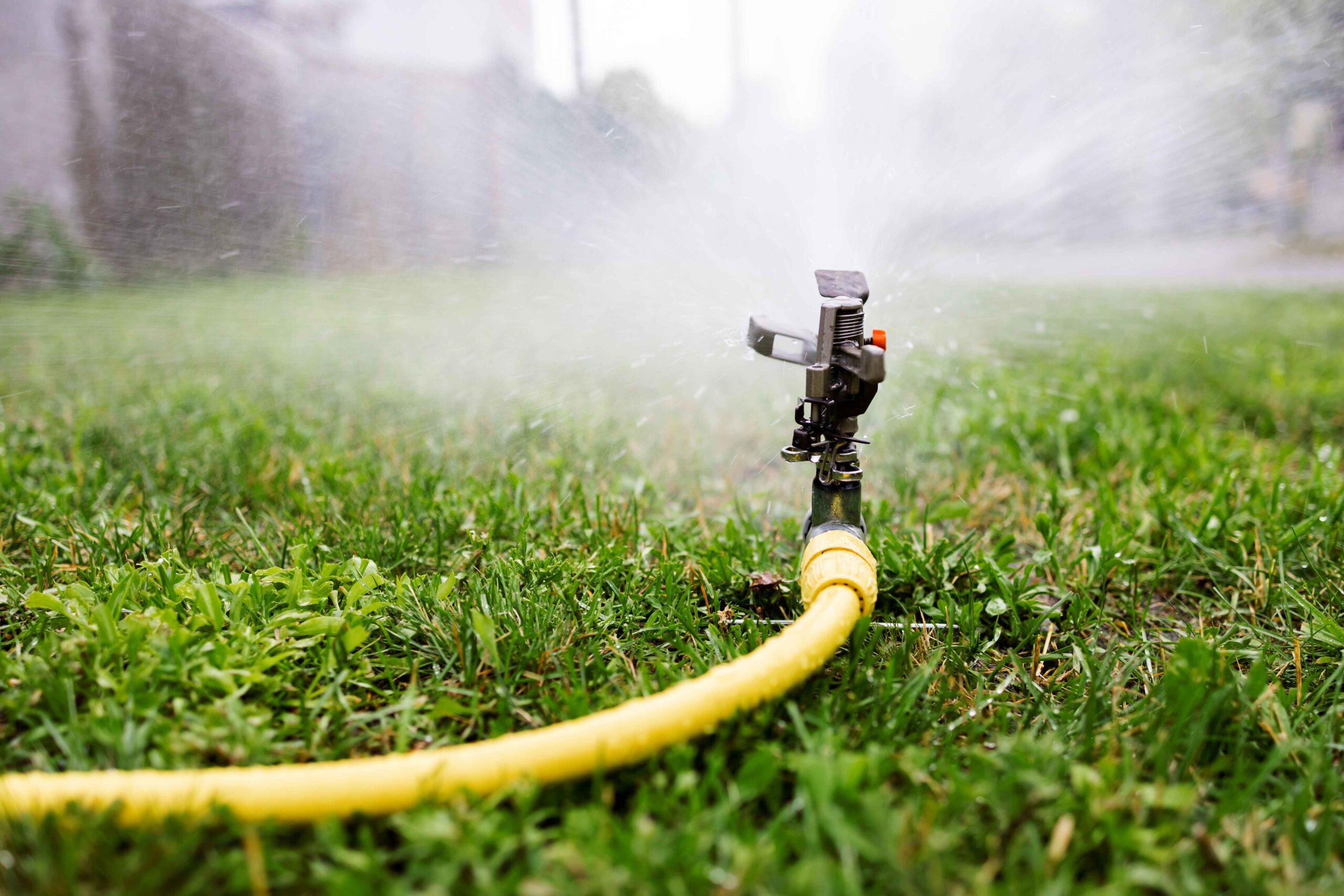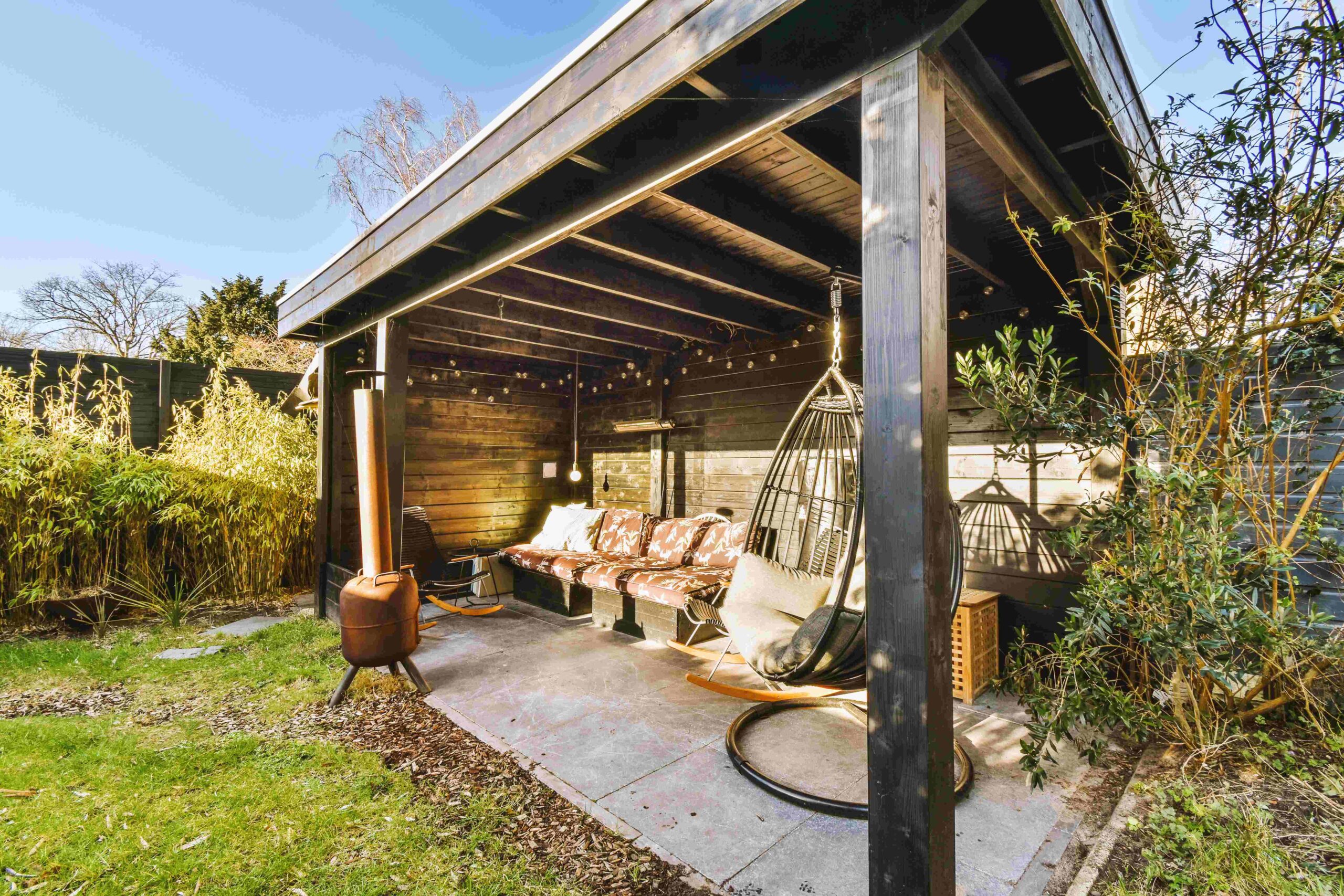Your backyard becomes more enjoyable with a 15-degree drop in temperature. This cooling effect stands out as one of the main differences in the pergola vs patio cover debate that homeowners face while picking their perfect outdoor shade solution. But what exactly is a patio cover, and how does it compare to a pergola?
A pergola showcases an open-roof design that lets filtered sunlight and climbing vines through, while a patio cover, also known as a covered patio, gives you complete protection with its solid build. The choice between a pergola over a traditional patio cover goes well beyond shade – it changes your property value and shapes your maintenance routine. Western Red Cedar pergolas naturally keep water and bugs away. Aluminum versions last more than 20 years and need little care.
Here at Opulands, we specialize in installing both pergolas and patio covers and will walk you through everything you should consider when choosing between these two popular outdoor structures. You can pick the right one that matches your home’s architectural design, works well for your needs, and adds value to your outdoor living space.
Understanding the Core Differences
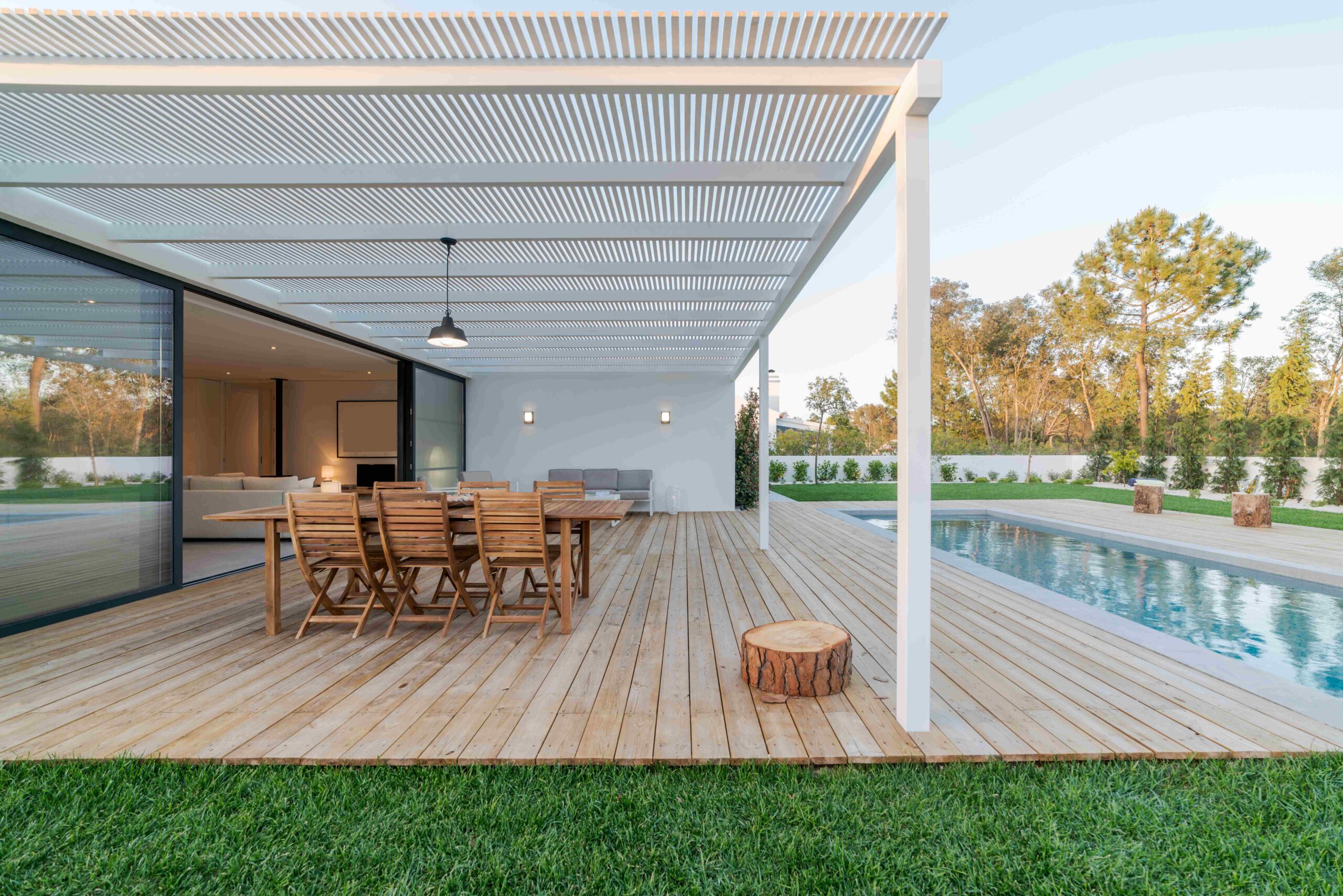
The main difference in the covered patio vs pergola debate comes from their structural design and purpose. Homeowners can make better decisions that line up with their outdoor living goals by knowing these key differences.
What is a pergola covered patio?
A pergola’s distinctive lattice framework makes it an open-air structure. The design features vertical posts that support an open roof with cross beams or rafters in a grid pattern, unlike fully enclosed spaces. Sunlight filters through this layout and creates beautiful patterns of light and shadow as the day progresses.
Pergolas blend both practical use and visual appeal. These structures define outdoor spaces without blocking nature completely. The latticed roof gives partial shade and lets air flow freely, which works great in areas where you want some protection from the sun while maintaining good airflow.
Homeowners can improve their pergola covered patio with climbing plants like wisteria, honeysuckle, or vines. These plants create extra natural shade as they grow on the structure. The pergola’s versatile design allows it to stand alone as a freestanding structure or be attached to the house, giving you freedom in where you place it.
How patio covers differ in structure and purpose
So, what is a covered patio called? Often referred to as a patio cover, this structure features a solid, continuous roof that gives complete protection from the elements. The patio cover extends right from the house and creates a smooth transition between indoor and outdoor spaces. You get full coverage and shelter from rain, snow, and harmful UV rays with this solid roof.
Patio covers focus on being practical. They provide weather protection so you can use your outdoor space year-round, whatever the conditions. These covers are typically attached to the house and don’t need extra yard space, which makes them perfect for smaller properties.
What are patio covers called? They come in various materials such as aluminum, vinyl, fiberglass, or wood. Each material has its benefits in aesthetics, durability, and upkeep needs. To name just one example, aluminum patio covers are light yet strong and need almost no maintenance.
Your choice between a pergola and patio cover depends on what matters most to you. You might prefer a pergola’s charm and filtered light, or you could want a patio cover’s complete protection and functionality. Both options can enhance your outdoor living space, just in different ways.
Choosing Based on Your Outdoor Space
The features of your outdoor space will shape your choice of shade structure. Your yard’s size, design, and climate considerations are vital factors that help you pick between a pergola and patio cover.
Small yard vs large yard considerations
The size of your yard shapes which outdoor structure fits best. Compact spaces work great with attached patio covers that maximize function without taking up extra room. These structures connect to your house and create an uninterrupted flow between indoor and outdoor spaces.
Homeowners with bigger backyards have more options. Large yards let you add freestanding structures that create cozy spots for relaxation away from the main building.
Size selection matters too. A 10’x20′ (200 sq ft) structure fits small yards perfectly and gives enough space for dining or lounging. Medium yards can handle 15’x15′ (225 sq ft) structures that suit standard suburban patios. Big properties support 15’x30′ (450 sq ft) designs with space for outdoor kitchens, dining spots, and bar areas.
Freestanding vs attached structures
Pergolas and patio covers attached to the house blend with your home’s architecture naturally. These cost less because they need fewer support posts. On top of that, they offer better protection since your house blocks some weather elements and adds structural support.
Freestanding structures serve a different purpose entirely. You can place them near pools or gardens to create a relaxed nature retreat. These standalone builds need extra support but let you pick any spot on your property.
Climate and weather impact on your choice
Weather patterns should guide your choice between a pergola and patio cover. Solid patio covers work best in rainy areas. Adjustable louvered pergolas let you control sunlight throughout the day in sunny regions, offering flexible outdoor shade solutions.
Strong winds call for tough materials and secure anchoring—properly installed aluminum structures can handle winds up to 100 mph. Near the coast, you’ll need materials like aluminum that resist salt air corrosion.
Temperature swings affect material selection too. Aluminum stays stable in heat while wood might crack or warp, making it perfect for hot climates.

Maintenance, Durability, and Cost Over Time
The long-term benefits usually matter more than the original costs when you invest in an outdoor structure. Your choice between pergolas and patio covers will significantly impact maintenance requirements and lifetime expenses based on their construction materials.
Wood vs aluminum: what lasts longer?
Wood and aluminum structures show a big difference in how long they last. Aluminum patio covers can serve you well for 20-30 years with minimal wear, while wooden structures typically only make it 10-15 years even with good maintenance. Aluminum’s superior lifespan comes from its natural resistance to common issues that damage wooden structures – you won’t see rot, warping, cracks, or termite problems.
Environmental conditions play a vital role in how materials hold up over time. Aluminum stands strong against constant sunlight, but vinyl tends to fade and crack with too much sun exposure. The material proves especially valuable in coastal areas, where its resistance to corrosion protects better against salt air than wood.
How much upkeep does each option need?
Different materials need vastly different levels of care. Wooden pergolas just need regular attention:
- Resealing or repainting every 2-3 years
- Annual inspections to check for rot, pest damage, and structural integrity
- Complete refinishing runs about $220 every other year
Aluminum structures are nowhere near as demanding – a simple wash with mild soap and water does the job. Quality aluminum products come with powder coating that lasts up to 20 years without needing a fresh coat.
Wood looks beautiful naturally, but it creates an endless cycle of maintenance throughout its life. Cedar resists insects naturally, but still needs protective treatments to avoid breaking down over time.
Long-term cost comparison: pergola vs patio cover
Aluminum pergolas cost more upfront than similar wooden structures. Notwithstanding that, the total cost of ownership tells us something different. A wooden patio cover’s price doubles over 10-12 years because of ongoing maintenance costs.
Many homeowners find aluminum structures save money in the long run. The minimal upkeep offsets the higher initial cost, especially when you think about replacing wooden structures within their first decade.
Vinyl offers a middle ground to budget-conscious buyers – it costs less than wood and needs less maintenance, but it can’t match aluminum’s durability or aesthetics.
Which Adds More Value to Your Home?
Outdoor structures are more than just beautiful additions to your home. They’re financial investments that can pay off handsomely. Your choice between a pergola and patio cover could make a big difference in your property’s value.
Curb appeal and resale value
Pergolas and patio covers can boost your home’s exterior appeal in unique ways. Real estate experts say homes with attractive and practical outdoor spaces often recover more than 100% of their costs in certain markets. A well-designed patio cover adds 8-10% to home value. A properly built pergola can boost your property value by $10,000 to $15,000.
Your location plays a huge role in these returns. Covered porches with outdoor kitchens or dining areas bring excellent returns in the Pacific Northwest. The same backyard patio addition was valued 27% higher in Orlando than Houston because of weather differences and market conditions.
Customization and ROI
The amount you customize these spaces directly affects your potential returns. Outdoor kitchens under pergolas or covers can give you up to 200% ROI in warm areas where people use them often. Fire pits deliver an average ROI of 78%, which jumps above 80% if you choose the right materials.
Money-smart homeowners can get amazing returns by fixing up existing structures. Current patios can deliver up to 500% ROI through simple upgrades. Renovating an old deck brings up to 400% ROI compared to 80% for building new.
What buyers look for in outdoor spaces
Homebuyer priorities have changed drastically over the last several years. Recent surveys show that 90% of homeowners see outdoor areas as vital to their health and wellbeing. Outdoor living spaces can add almost $20,000 to your home’s value.
Today’s buyers really want patios – 82% list them as must-haves, ranking higher than porches or decks. The numbers tell an interesting story: 80% of people say they use outdoor spaces mainly for family and friend gatherings. This social aspect explains why pergolas with built-in lighting, shade options, and weather-resistant materials command top dollar in today’s market.
Ready to Decide? Let’s Settle Patio Cover vs Pergola for Your Space
The choice between a pergola and patio cover depends on your specific needs, space, and lifestyle. Pergolas add aesthetic charm with filtered sunlight and work perfectly for homeowners who want balanced shade and natural light. Patio covers excel at providing complete protection from weather elements, which becomes valuable in areas with frequent rain or intense sun.
You can schedule your project and design consultation to get an estimate today. An Opulands discovery consultation works perfectly if you want modern, sensibly designed, and enviable front or backyard outdoor landscaping but feel overwhelmed about your needs, available options, and what suits your yard.
A pergola’s partial shade or a patio cover’s full protection can reshape the scene of your outdoor spaces into valuable living areas. Your decision should match your local climate conditions, maintenance priorities, and desired return on investment. The right choice boosts not just your property value but also your daily living experience. Contact us today to get started.
FAQs
Pergolas offer partial shade with an open lattice design, allowing filtered sunlight through. Patio covers provide complete protection from sun and rain with their solid roof structure. The choice depends on your desired level of shelter and light filtration.
While wooden pergolas may have a lower initial cost, aluminum patio covers are generally more cost-effective in the long run. Aluminum structures require minimal maintenance and can last 20-30 years, whereas wooden structures often need replacement within a decade and require regular upkeep.
Both structures can increase home value. A well-designed patio cover can increase home value by 8-10%, while a properly constructed pergola can add between $10,000 to $15,000 to property value. The exact impact depends on factors like local climate and market preferences.
For small yards, consider an attached patio cover as it maximizes functionality without consuming additional space. It creates a seamless indoor-outdoor transition and doesn’t require extra yard space. However, if you prefer a more open feel, a small pergola can still work well in compact areas.
Climate plays a crucial role in this decision. In areas with frequent rain, solid patio covers offer superior protection. For regions with intense sunshine, adjustable louvered pergolas allow you to control light penetration. In high-wind areas, sturdy materials and proper anchoring are essential for both options.

